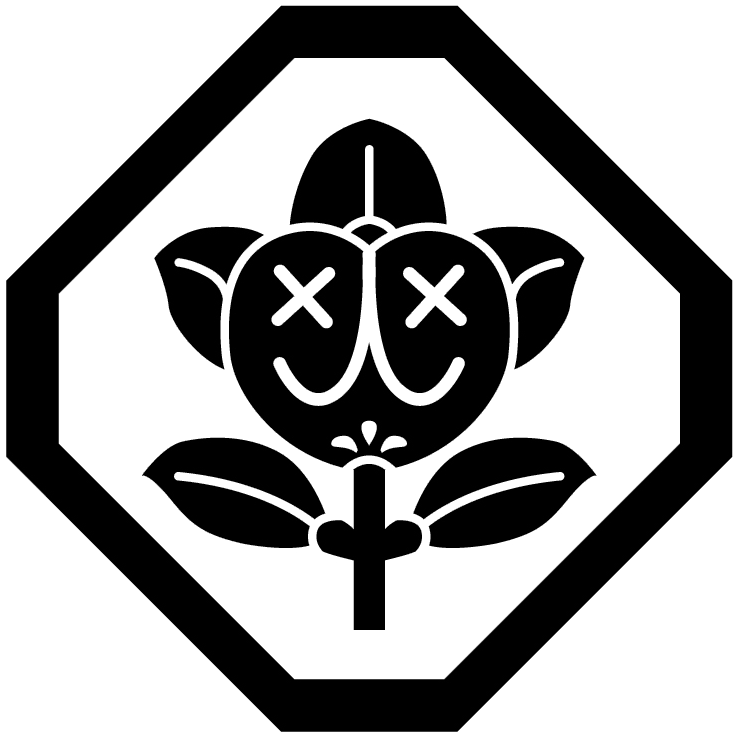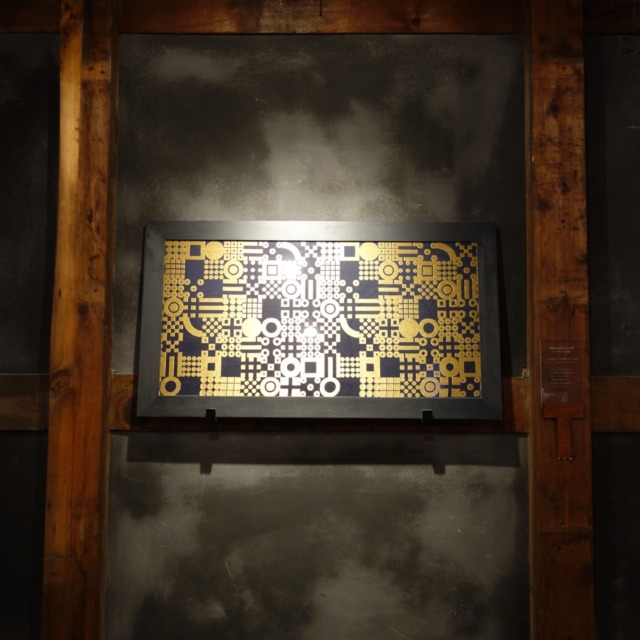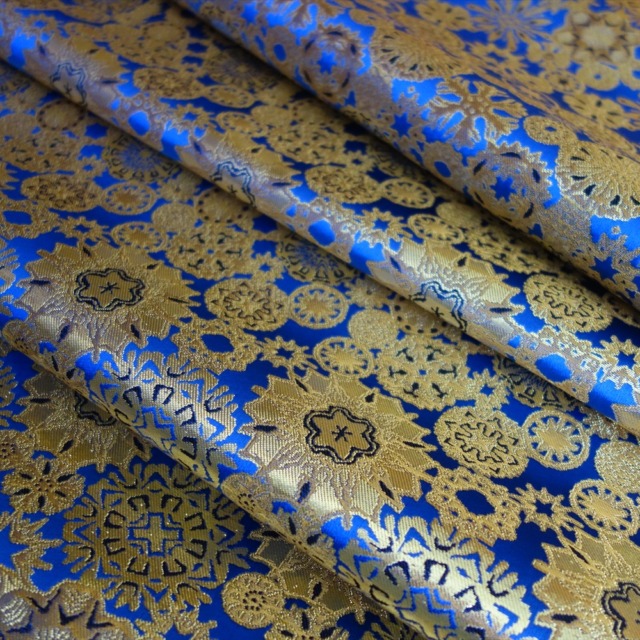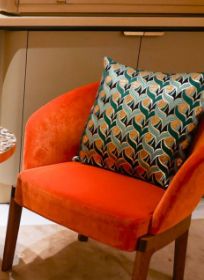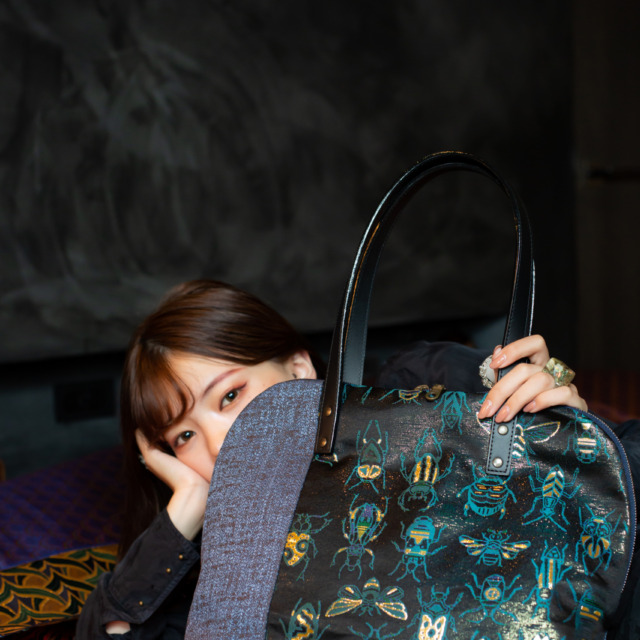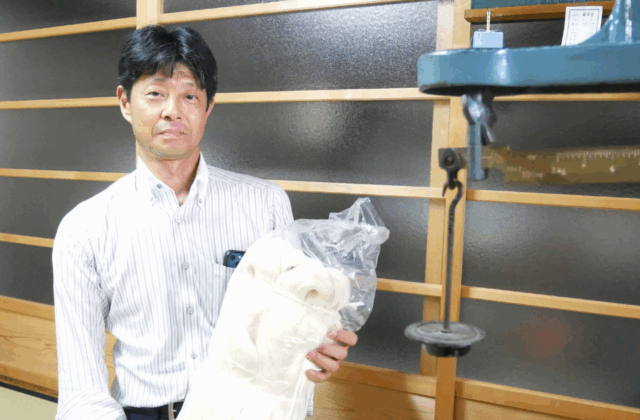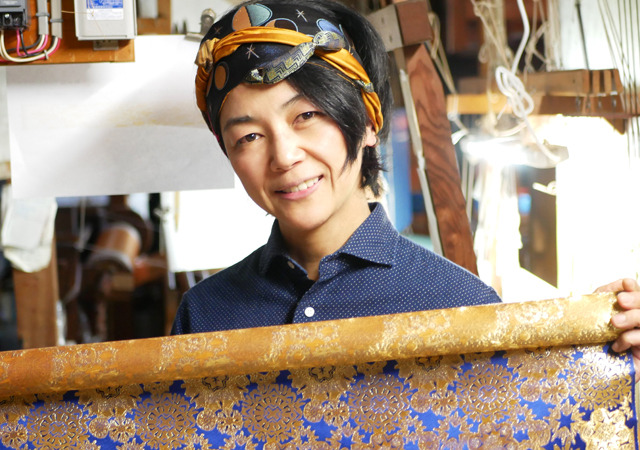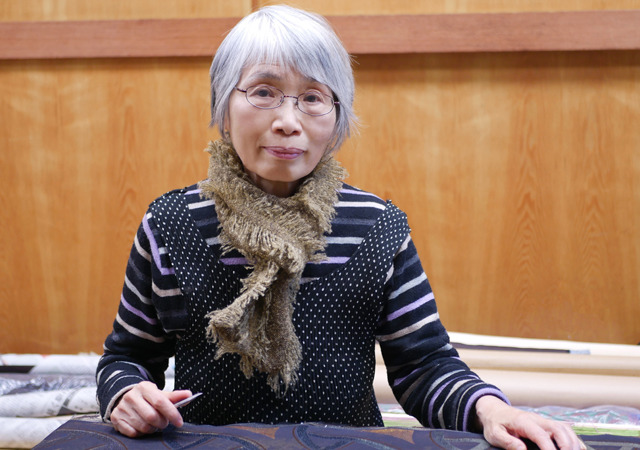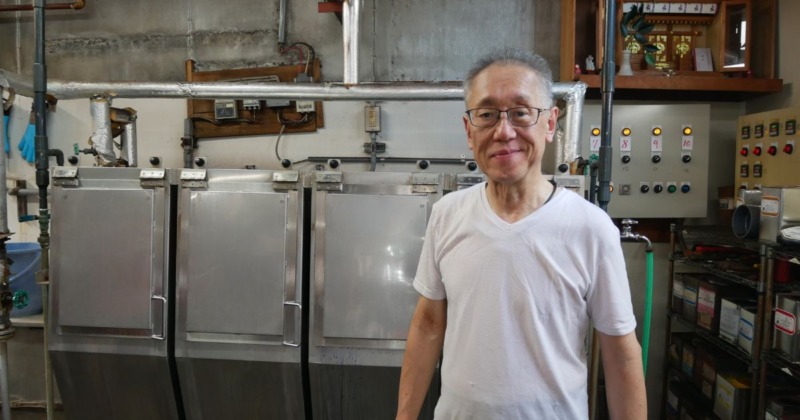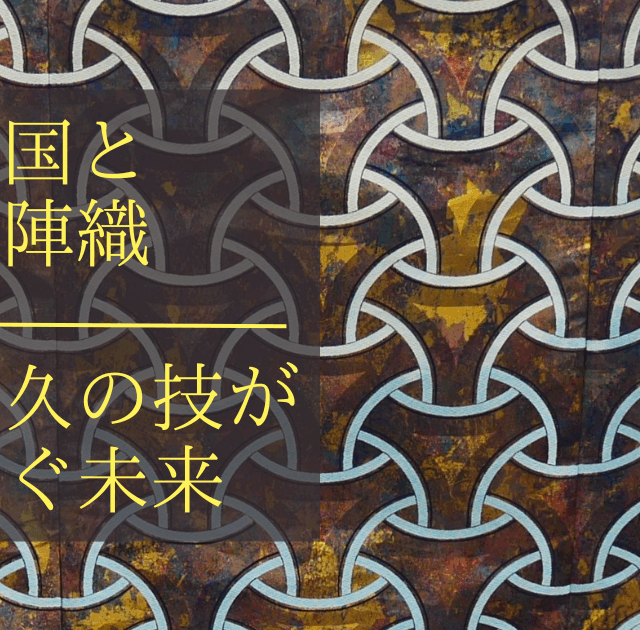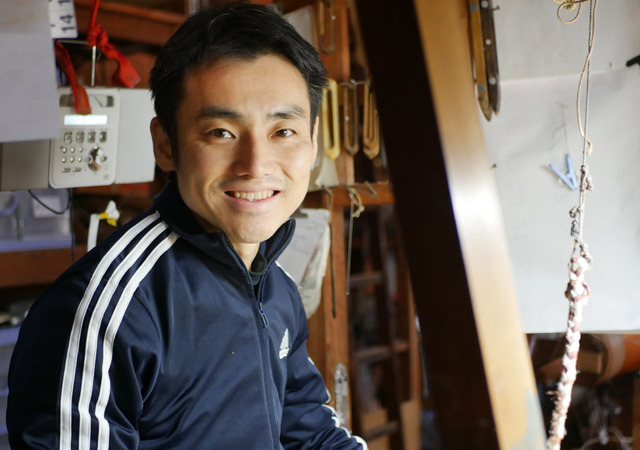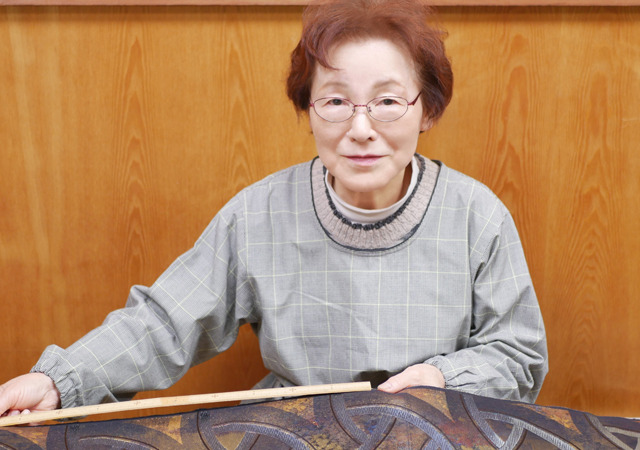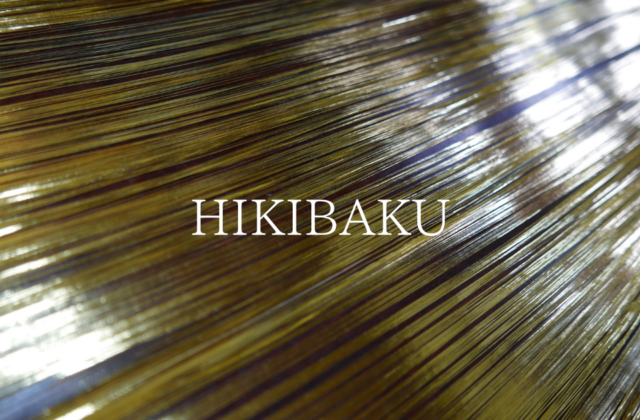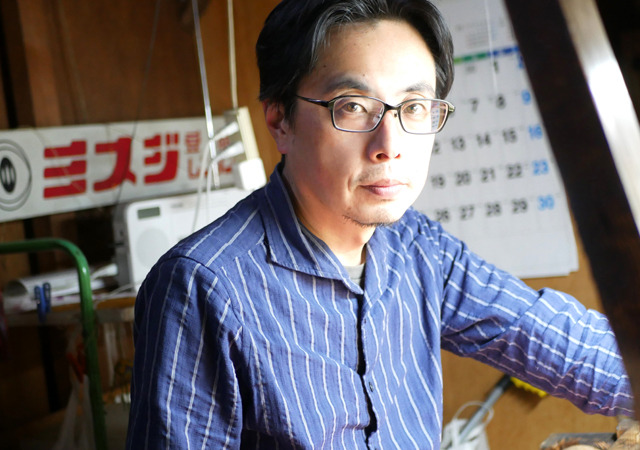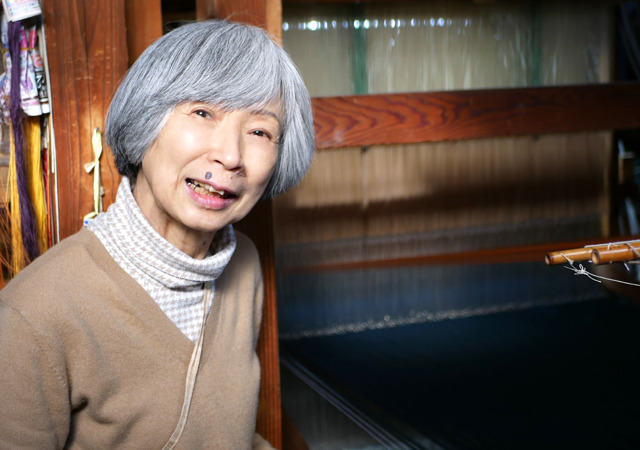Nishijin-ori is a type of ‘pre-dyed fabric’ in which patterns are woven using coloured threads. The completion of this fabric requires the skilled craftsmanship of many artisans.
Among these, the process of dyeing silk threads is crucial as it determines the colour and texture of the fabric.
On 23 July 2025, we visited Terai Senkou, a dyeing shop located in Kamishichiken, Kyoto.
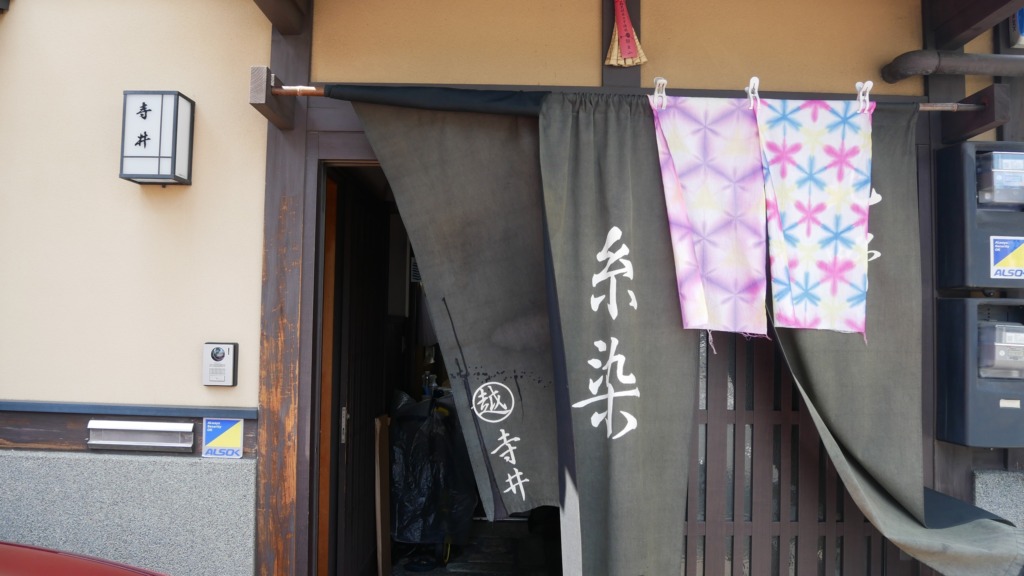
Founded in 1912, the workshop run by the third-generation owner, Kazuo Terai, was filled with the heat of silk dyeing. Despite the outside temperature of 37.2°C, the workshop was even hotter due to the burning boiler, creating a scene that truly embodied the spirit of dyeing.
Terai Senkou Co., Ltd. Kazuo Terai
Dyeing imbued with sincerity|The aesthetics of deciding on a colour in a single step
Terai, who says he wants to dye colours honestly, insists on deciding on the colour in one go to prevent the silk thread from deteriorating. Silk thread is delicate and requires advanced craftsmanship and intuition to handle.
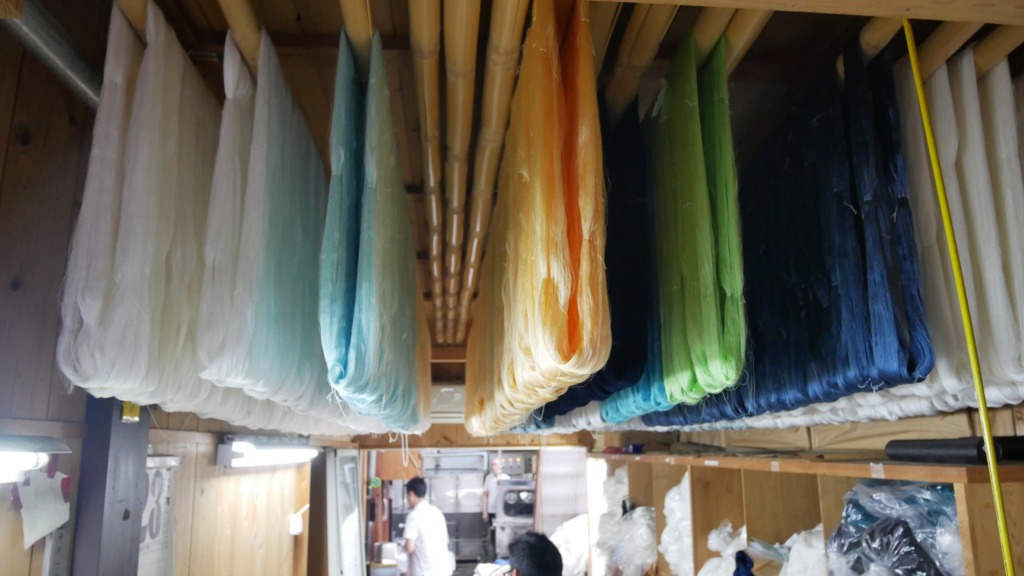
Memorable dyeing scenes|‘Okudo-san’ and bag thread refining
The first image I remember of a dyeing workshop is Okudo-san. In the old days, they used a pot called an ‘okudo-san’ to dye thread. They converted the passageway and storehouse into a workshop with three pots of different sizes: large, medium, and small. They used coal and coke as fuel. At that time, they used a method called ‘bag refining.’ Nowadays, they use machine refining.
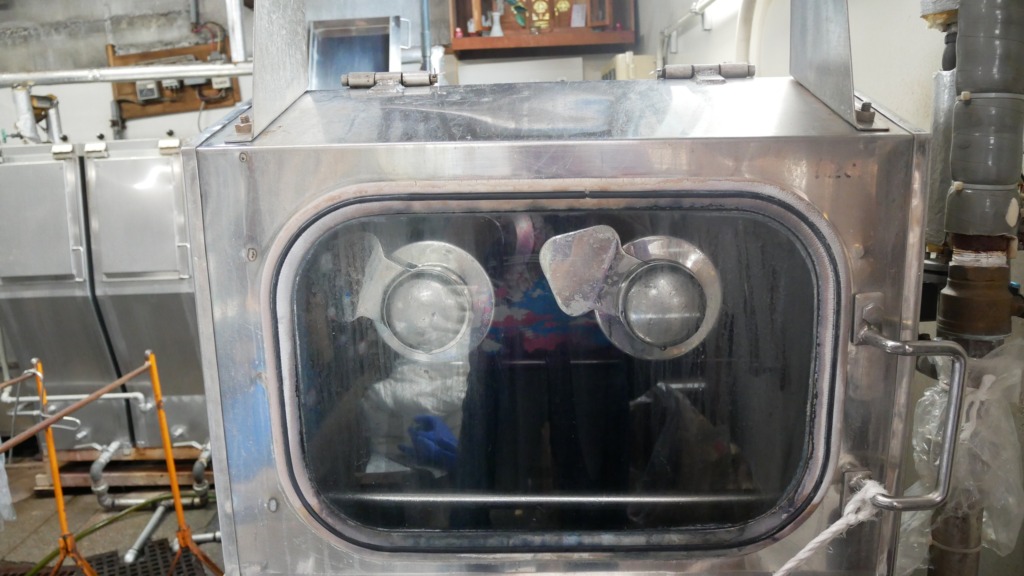
Bag thread refining is a method of placing thread in a bag and immersing it in hot water. The bags were made of cotton. This method prevents tension from being applied to the silk thread, allowing it to retain its original texture. The thread becomes plump and fluffy, and the quality of the finished product is different from that of machine refining. It takes skilled technique to smooth the thread with a stick while taking care not to disturb it.
I started working at the dyeing shop to help my grandfather and father.It’s a job done in steam and heat, so you have to learn it young if you want to do it for a long time.
To obtain the dyeing skills certification, I attended a vocational training school run by the Dyeing Industry Association. I never found thread dyeing to be particularly difficult. However, handling silk thread (sorting and tying) is challenging and takes time to master. Even now, I always take care when handling thread. Keeping it neat and tidy is the first step in working with silk thread.
The Changes and Future of Nishijin|Nishijin Through the Thread
I have done various jobs, but the most memorable ones that come to mind are dyeing the threads for the twelve-layered kimono worn in imperial ceremonies and dyeing the small stones grown at the Imperial Palace. The words that make me happy when customers say them are, ‘That’s a beautiful colour.’
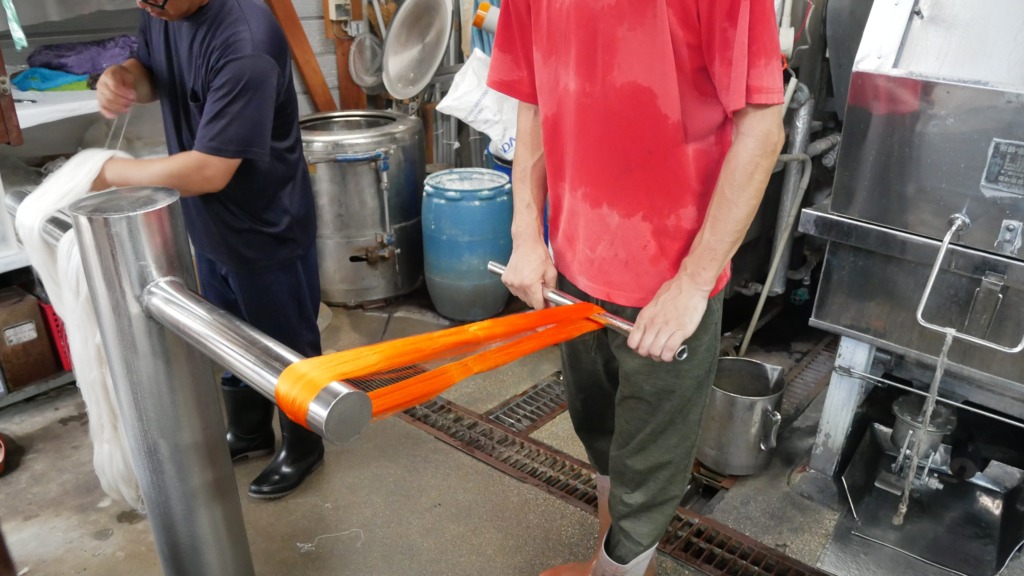
Silk thread is different now than it was in the past. Thread made by spinning raw cocoons using the traditional ‘zakuri’ method is easy to handle and produces high-quality fabric. However, with the advent of high-speed spinning and changes in cocoon drying methods, the characteristics of silk thread have also evolved.
What concerns me lately is that ‘weavers don’t know much about textiles.’ I wish weavers would gain a deeper understanding of textiles.In an era where production is prioritised, it is essential for creators themselves to deepen their understanding of materials and techniques.
Now, my son, who is my successor, and his junior colleagues have joined the business, bringing new energy to the company. We also offer assistance to other regions facing challenges in silk dyeing. To the people in Nishijin who have worked with us so far, I want to say, ‘Please sell lots of good products and help revive the industry.’
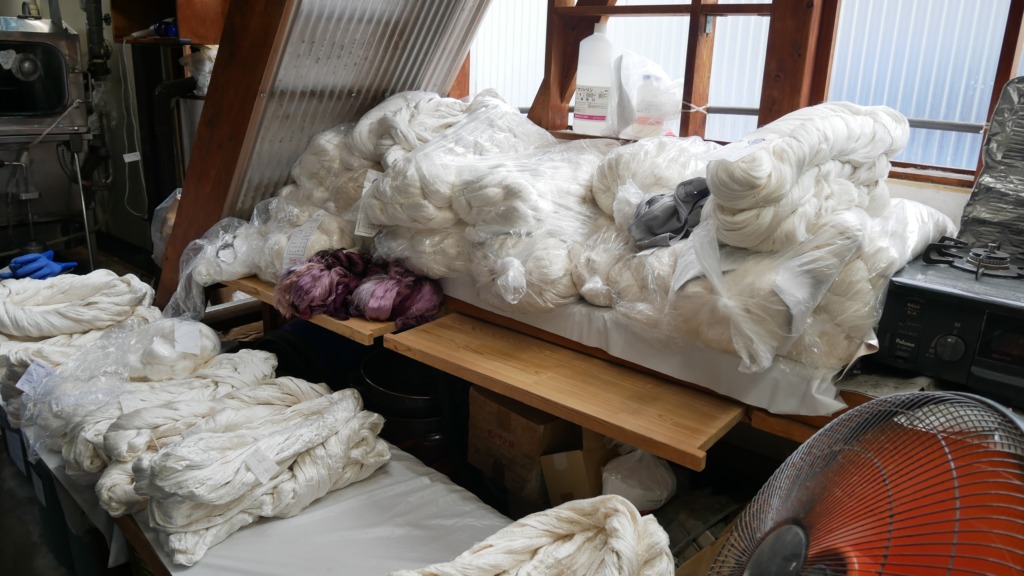
Enriching culture|An encounter with Noh and the thoughts of craftsmen
I started learning Noh, a traditional Japanese performing art, after turning 60.
The reason I am learning Noh now is that in the songs of Noh, I can find a wide variety of ‘colours’ in the scenery of the story and the hearts of the characters.
In my daily life, I strive to discover more of these ‘colours’ through Noh. In the past, craftsmen naturally immersed themselves in traditional performing arts and other cultural practices as part of their daily lives. That is why I hope that even younger people, who are much younger than me, will come to appreciate the charm of traditional performing arts.
Through my involvement with traditional performing arts, I have come to feel a deeper connection to my current work—traditional dyeing—and to see it as something more intimate and meaningful.
Terai Senkou Co., Ltd.
所在地: 〒602-8383 京都府京都市上京区今小路通御前通東入西今小路町814
(Interviewed on 23 July 2025 / Text, photos, and videos by Ema Okamoto)
Editor’s note
The Nishijin-ori textiles that the author, who works at a Nishijin-ori weaving workshop, sees and touches every day. Nishijin-ori is a type of ‘pre-dyed woven fabric.’ The threads are dyed first, and then the patterns are woven using the colours of the threads.In late July, during a heatwave with extreme heat warnings, I was sweating profusely while moving around the workshop with a camera, as if I were running a marathon. The staff at Terai Dyeing Workshop welcomed me with genuine warmth, and Mr. Terai, the president, took the time to speak with me. It was striking how cool and refreshing it felt to step outside from the dyeing workshop into the sweltering heat.
During our conversation about learning Noh theatre, you mentioned ‘searching for colour.’ I thought, ‘Weavers are always searching for “weave” in the landscape, while dyers are searching for “colour.”’ It’s like a professional habit, or perhaps a way of life. It’s very interesting.
Our company occasionally receives requests to repair or reproduce Nishijin textiles that are 50 to 100 years old.In such cases, we need to reweave using new threads, but the challenge lies in matching the colour. Even silk that was originally brand-new has changed colour over time, so we must dye it to match the current ‘faded colour’ to recreate the original texture. Despite these challenges, the dyers approach them with dedication and always provide invaluable assistance.
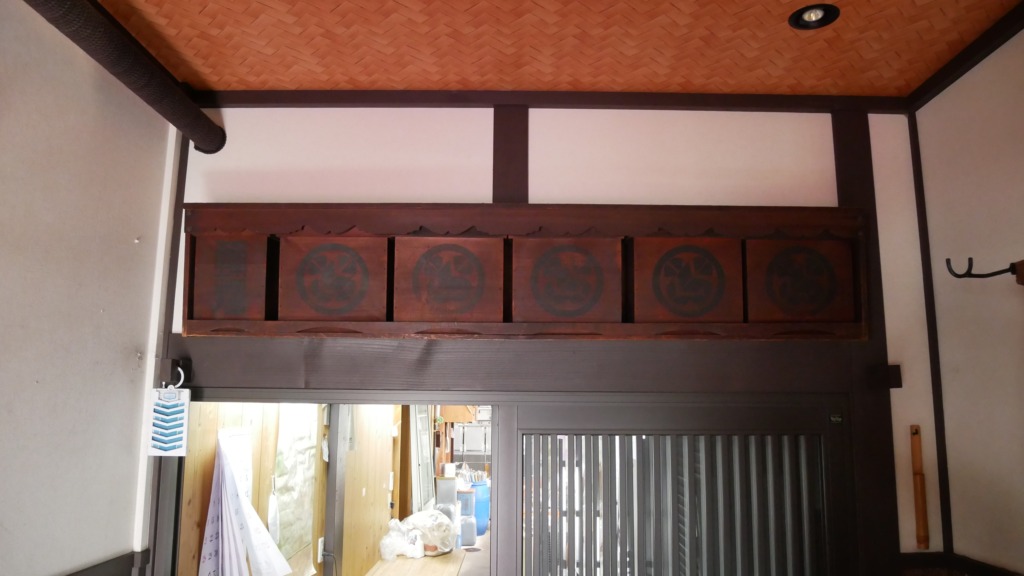
Next time, we will interview a specialist in warping the warp threads for Nishijin-ori textiles.
You can view previous interviews with craftsmen here.
